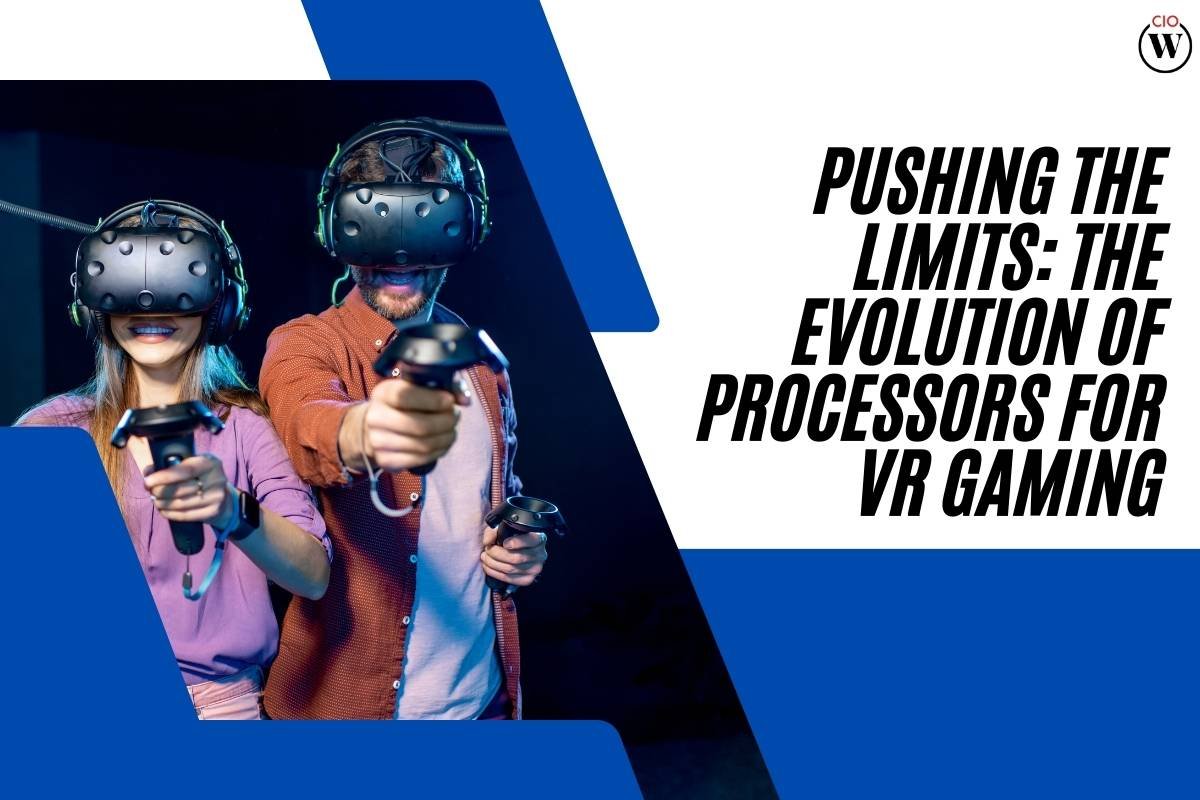Virtual reality (VR) has revolutionized gaming by providing incredibly immersive experiences. Central to this innovation are processors designed specifically for VR gaming. These advanced components, known as processors for VR gaming, play a crucial role in delivering the high-speed computing power needed to create realistic virtual worlds, handle complex interactions, and ensure games run smoothly. As VR becomes more popular among gamers and developers, there’s a growing need for processors that can meet its specific requirements. Early VR systems faced challenges with performance and compatibility, but as VR technology improved, companies like NVIDIA, AMD, and Qualcomm started developing processors tailored specifically for VR gaming.
Understanding Processors for VR Gaming
Processors for VR gaming are designed to handle the intensive computational requirements of virtual reality. Unlike traditional gaming CPUs, these specialized processors prioritize minimizing latency, maximizing frame rates, and supporting high-resolution graphics rendering. Low latency ensures immediate response to user actions, which is essential for maintaining immersion and preventing motion sickness in VR environments. High frame rates contribute to smooth and realistic visuals, enhancing the overall gaming experience by providing fluid motion and detailed graphics.
These advanced features enable VR gaming processors to create seamless and immersive virtual worlds that push the boundaries of interactive entertainment, blurring the line between virtual and reality. As VR technology continues to evolve, these processors play a crucial role in shaping the future of gaming by delivering enhanced realism and responsiveness to meet the demands of modern gamers.
The Evolution of VR Gaming Processors

As virtual reality (VR) technology evolved, early systems faced challenges such as performance bottlenecks and compatibility issues. These issues arose because VR experiences demanded far more processing power and specialized capabilities than traditional gaming hardware could provide. To address these limitations, semiconductor giants like NVIDIA, AMD, and Qualcomm embarked on developing dedicated processors tailored specifically for VR applications. These new processors were optimized to deliver high-performance graphics rendering, low-latency responsiveness, and efficient thermal management—all essential for creating immersive VR environments that meet the rigorous demands of modern gamers and developers alike. This shift marked a significant milestone in enhancing the overall VR gaming experience.
Key Features and Innovations
1. High-Fidelity Graphics Rendering
Processors for VR gaming prioritize graphics rendering capabilities, ensuring that VR environments are rendered with lifelike detail and realism. Advanced GPU architectures and shader technologies enable developers to create immersive worlds with dynamic lighting, realistic textures, and spatial audio.
2. Low Latency Performance
Minimizing latency is crucial in VR gaming to maintain synchronization between player movements and virtual environments. Dedicated VR processors achieve low latency through optimized data pipelines, advanced caching mechanisms, and efficient memory management strategies.
3. Efficient Thermal Management
VR gaming sessions can place significant demands on hardware, leading to heat generation and potential performance throttling. Processors for VR gaming integrate advanced thermal management solutions, including heat spreaders, thermal paste formulations, and integrated cooling solutions, to maintain optimal operating temperatures without compromising performance.
Applications Across VR Platforms
The versatility of processors for VR gaming extends across various VR platforms, including:
- PC-Based VR Systems: High-performance processors power VR experiences on desktop PCs, offering gamers the flexibility to customize hardware configurations for maximum performance.
- Standalone VR Headsets: Integrated processors in standalone VR headsets combine computing power and mobility, enabling immersive VR experiences without the need for external hardware.
- Console-Based VR: Consoles like PlayStation VR utilize specialized processors to deliver console-level gaming experiences in virtual reality, leveraging proprietary technologies to optimize performance and compatibility.
The Role of AI and Machine Learning

AI and machine learning technologies are increasingly integrated into processors for VR gaming to enhance performance and user experience. Applications include:
- Predictive Rendering: AI-powered processors predict user movements and adjust rendering priorities in real-time, ensuring smooth and responsive gameplay.
- Adaptive Resolution Scaling: Machine learning algorithms analyze gameplay patterns to dynamically adjust resolution settings, optimizing performance based on computational demands.
- Behavioral Analysis: AI-driven processors analyze user behavior and biometric data to personalize gaming experiences, adjusting environmental factors such as lighting and sound to enhance immersion.
Challenges and Future Directions
Despite their advancements, processors for VR gaming face challenges such as:
- Cost and Accessibility: High-performance VR processors can be expensive, limiting accessibility for some gamers. Future advancements in manufacturing and economies of scale are expected to reduce costs and broaden market availability.
- Interoperability: Ensuring compatibility and seamless integration between VR headsets, processors, and software remains a priority for developers and manufacturers.
Future Innovations and Emerging Technologies

Looking ahead, the future of processors for VR gaming holds exciting possibilities:
- Wireless VR: Integrated processors capable of wireless VR streaming could eliminate the need for tethered headsets, offering greater freedom of movement and flexibility for gamers.
- Haptic Feedback Integration: Advanced processors may incorporate haptic feedback technologies to simulate tactile sensations, further enhancing immersion and realism in VR gaming experiences.
- Cross-Platform Compatibility: Universal VR gaming processors that support multiple platforms and ecosystems could streamline development efforts and foster a more interconnected gaming community.
Conclusion
Processors for VR gaming are crucial for pushing innovation in the gaming industry. They allow developers to create immersive and realistic virtual reality experiences that captivate players. As technology improves and more people want VR gaming, these processors are evolving to offer even better experiences. Whether they’re used in powerful PCs or standalone VR headsets, these specialized processors are leading the way in shaping the future of gaming. They give gamers access to incredible virtual worlds that feel almost real, blending imagination with reality in ways that were once only a dream.









